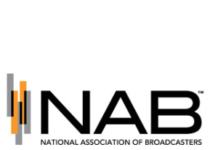
Bob Papper is Emeritus Distinguished Professor of Journalism at Hofstra University. Papper has been producing the annual RTDNA/Lawrence Herbert School of Communication at Hofstra Newsroom Survey for 25 years. His latest study is out and we spoke to him about his findings.
Radio Ink: From your research it appears radio listeners will have to rely mainly on public radio for local news.
Papper: I think where listeners can go for radio news depends on the market. In the biggest markets, there’s likely to be pretty good public radio and commercial radio as well. In many of the very smallest markets, when there’s no university (and no university-based public radio), then local news comes from commercial stations. That may even be the audience’s only available local news. In between, public radio is probably the primary supplier of local news … with some commercial alternatives here and there. At the same time, a lot of public radio stations do little or no local news. That’s even true in some pretty large markets.
Radio Ink: What are your general conclusions about where radio is headed with local news (excluding public radio)?
Papper: Excluding public radio …. I think a local commercial radio group in a small market that isn’t doing local news is missing the boat. At least some of those stations should be making strong bets on local news. Beyond that, it’s more complicated and probably depends heavily on a lot of variables in the market. Clearly, local radio news isn’t a growth industry.
Radio Ink: Did you get the impression that commercial stations are losing money in the news format?
Papper: My impression is that a lot of commercial stations don’t see news as a moneymaker, and they don’t even break down money from news versus other programming. I really think that most stations have no idea if news makes them money.
Radio Ink: What role is social media playing in how radio stations deliver news to listeners?
Papper: Outside of the very smallest markets, social media appears to be a critical part of reaching the audience. It isn’t necessarily where major news is delivered, but it’s certainly where stations tell people that they have important news to listen to.
Radio Ink: – What do you think the impact of further deregulation by The FCC would have on local news?
Papper: It’s hard to see where any further deregulation will have a lot of impact on local radio news. When stations no longer had to run local news, everything changed. When the EEO rules were thrown out, the complexion of radio changed. I’m not sure there’s a big downside available.
Get more about the study HERE







Is there a list of full-time news stations? Far as I know, the only full-time-ers are in NYC, DC, Philly, Chicago, Los Angeles and San Francisco: WINS/WCBS, WTOP, KYW, WBBM, KNX and KCBS. Am I missing any?
Besides that, there’s just the NPR stations, of which there are many.
That’s very nice, Kevin.
And how lonely you must be. 🙂
Excuse me…but there are some very good radio news operations out there. I work for Cox Media Group. We do local news top and bottom of the hour 5 AM to 12 midnight Monday-Friday…6 AM to at least 7 pm Saturdays and even on Sundays as needed. When there’s a need to do emergency coverage, our staff of anchors and reporters come running. We have a combined news room of Radio, TV and Newspaper reporters scouring the city here in Dayton for news. We bring the newsmakers live on air when ever needed…and we win numerous awards from AP, The Society of Professional Journalists and other organizations. Just this year, we won Best Newscast and other awards from the state APME.
No one in radio other than NPR and its local affiliates does much more than the shallowest of headline reporting these days. Radio news has become an absolute joke. Even the vaunted WTOP, churning the same headlines over and over and over each hour, is praised not for its reportage, but for its billing. Sad.
WTOP is praised for both reporting and billing. That’s how you get to be #1.
They do a decent job on “if it bleeds, it leads” local stories, and are the go-to source for traffic every 10 minutes, but – especially considering that they’re based in our nation’s capital – it’s basically just a framework of short, *shallow* content designed merely as a delivery system for a maximum spotload. How many full time investigative reporters are on staff? That’s the sort of “luxury” you’d expect the highest billing station in the country to be able to boast about.
Agree, Rob. NPR is the only solid source for news in the radio market that I am aware of, there may be regional markets with local stations that do a good job but I am unaware of them.
Even NPR can be hit or miss depending on the market, major markets tend to have it down whereas smaller, more rural markets can be difficult to listen to. I find the NPR affiliate in Kansas City (KCUR) to be exceptionally well-delivered radio while the station in St. Louis (KWMU) seems to have some difficulties. I’ve found the Salt Lake City affiliate (KUER) to be very good as well and listen to it frequently.
“First! Fast! Factual!”
“On The Hour!”
“Half-Hour Majors – 8:00. Noon and 5:00!”
“News – When It Happens!”
“Twunty-Twunty News!” 🙂
A lot of people reading this would have no memory of those at all.
Contemporary Robo-radio don’ do none o’ that no more.
We do a report repeated five times a day. We have a person hired to focus on news but has other duties. We get good traffic to our website news page. We have two sponsored and one barter the other two reports are not sponsored. It does not generate enough revenue to break even.
Radio News is dead in most markets especially small rural stations. They mostly import network news, and repeated news headlines and little else. Glad our station still does 1 hour newscast 3 times per day, but few do that any more.